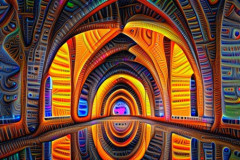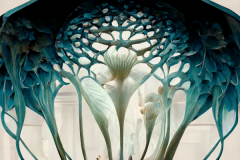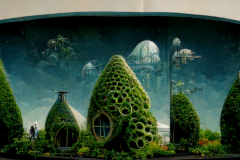Dream of a Beautiful New World?
A new chapter of AI architecture
Text: Bálint Botzheim
Artificial intelligence has quietly crept into our lives. We are surrounded by smart devices that monitor our habits and serve (or control?) us. In the digital space, our presence is even more permeated by the presence of software technologies using artificial intelligence. Architecture cannot be an exception in this change, including architectural design and architectural design language. We can distinguish two trends in the application of artificial intelligence. The first, which wants to provide design support, optimize various performance indicators of buildings. The second one, which is also discussed in this article, could be called the cognitive trend. In 2015, a Google employee, Alexander Mordvintsev, first trained the machine with many millions of images, labeling them for image recognition, and then asked it to dream up new content from the fed images. The software was called DeepDream, and it was the first to “hallucinate” or, in other words, dream, based on the images fed to it. Since then, several generations of AI software have appeared. The second generation was represented by StyleGan, released in 2018, which could dream depending on the input image set. The latest generation is represented by the Midjourney software, released this spring, which is even more powerful than its predecessors and can also be used to generate architectural images.




